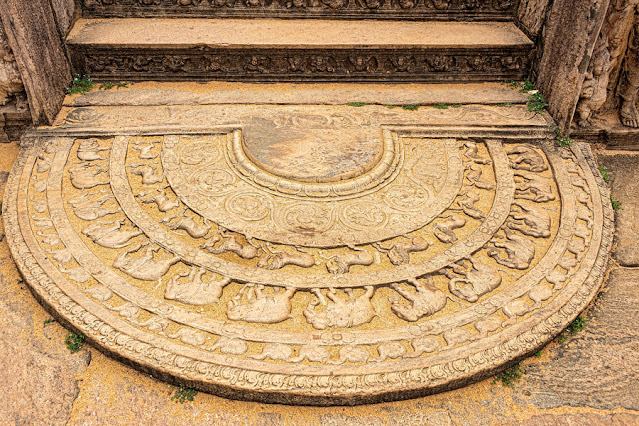Anuradhapura
One of the greatest and oldest civilizations in the world. the first capital, ruled by 113 kings for over 1000 years and is famous for its Dagobas (Temples), Reservoirs, and beautifully landscaped gardens, the ruins of which still remain to this day. There are many examples of town planning, irrigation and many large constructions that rival the Egyptian pyramids. The most significant are the great Stupas which are dome shaped buildings over a hundred meters tall. An ongoing archaeological site and a living pilgrimage destination for Buddhists from around the world.
Some places you shouldn't miss in Anuradhapura
Sri Maha Bodhi - the oldest living tree of the whole world with a written history . the sacred tree under which Lord Buddha attained enlightenment and that has stood with pride for more than 2200 years.
Ruwanweliseya, a monument built in 140 BC that embodies the culture, heritage, and supremacy of the strongest kingdom in Sri Lankan history.
The beautiful Isurumuniya Rajamaha Viharaya- built in 3rd Century BC.
Jetavanarama - one of the tallest brick monuments in the world and contains sacred relics including gold folios containing sutras (scriptures) with Buddhist teachings, coins, ceramics and other artefacts.
Abhayagiri Stupa - The second largest of the stupas in Sri Lanka. It is believed that the broader monastic complex, extending over 200 hectares, was once an important educational institution, which today features sculptures, statues and residential units.
The Moonstone is a stone’s throw from the Abhayagiri Stupa dating back to the 7th or 8th Century. The Moonstone features realistic carvings that are thought to symbolize Samsara, the neverending cycle of birth and death, and breaking the cycle which leads to Nirvana, a state of enlightenment and freedom from suffering.
Kuttam Pokuna - an example of Sri Lankan art and technology beyond its years.
The Samadhi Buddha Statue - one of the most revered sites in Anuradhapura, dating back to the 4th Century.
Mihinthale Kantaka Cetiya- one of the earliest religious monuments on the island, originally excavated in 1934.
Kaludiya Pokuna (Pond of Black Water) – This artificial lake supplied water to a monastery that stood here during the 10th or 11th centuries.
Ambasthala Dagoba -A large seated Buddha looks down from a rock above.





No comments:
Post a Comment